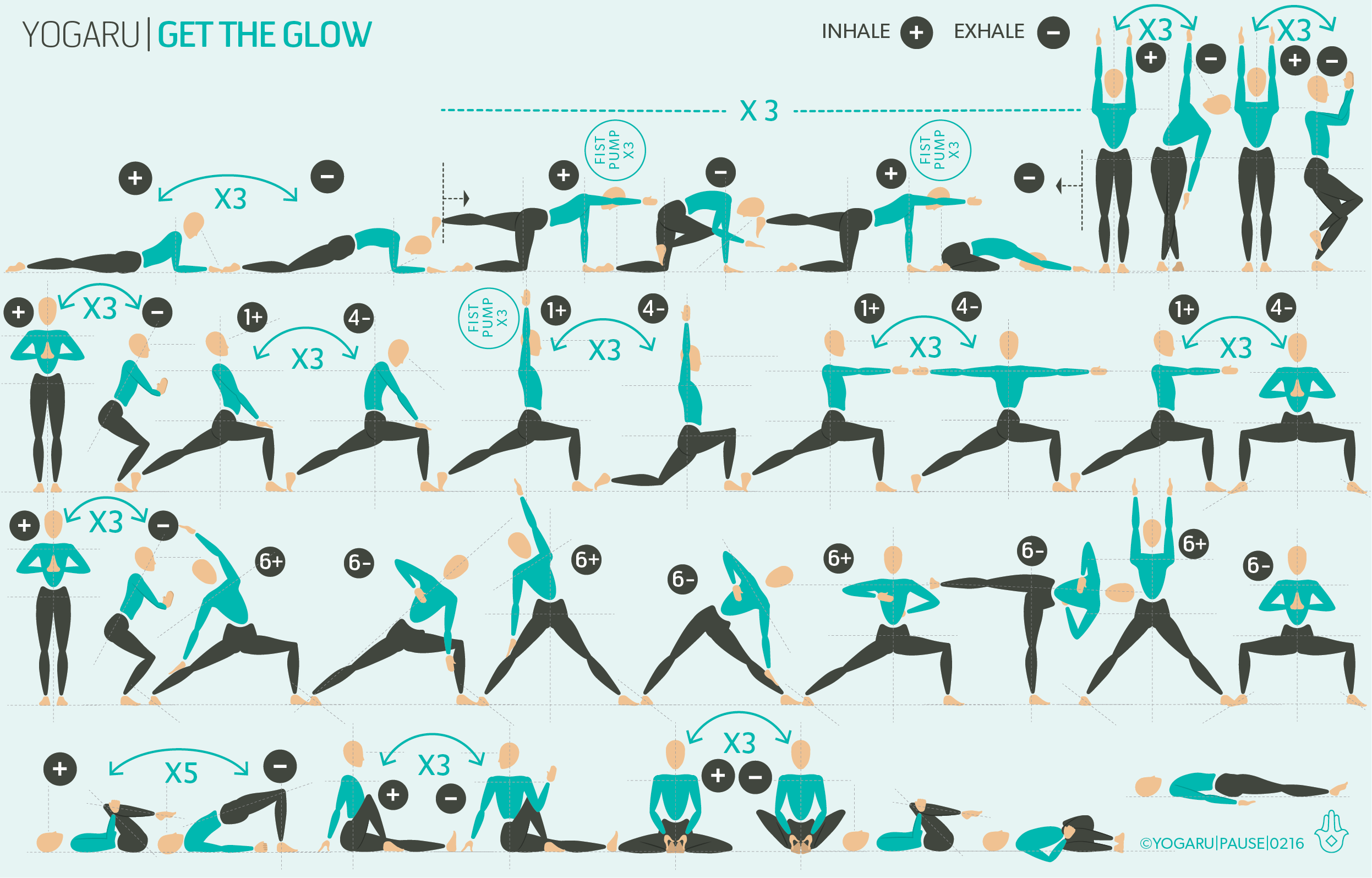SPRINKLE MOVEMENT INTO YOUR CHRISTMAS
Over the years, I’ve shared all kinds of Christmas and New Year practices – gentle December flows, grounding New Year resets, and quick mini-sequences you can squeeze in between festive plans. This year, I’m giving you a sequence you can dip in and out of whenever you need it, helping you sprinkle movement and rest into your Christmas – just enough to feel energised and supported
The holidays have a rhythm of their own – busier days, richer food, more sitting, and routines that seem to shift depending on who’s visiting or what’s on the calendar. It’s easy to tell ourselves we’ll restart our practice after the holidays, only to reach that point feeling stiff and out of balance. This year, try the opposite approach!
LITTLE + OFTEN
Instead of waiting until you feel uncomfortable, weave movement into your Christmas before sluggishness creeps in. You can practice the full sequence or, when time is tight, sprinkle it throughout your day. “Little and often” goes a long way to keep you feeling energised and ready for all the festive fun.
Gentle movement and MFR help keep your fascia hydrated, your joints gliding smoothly, your circulation flowing, and your digestion supported. Pranayama and restorative yoga regulate your energy, lift your mood, and offer a supportive reset for your nervous system.
Think of these practices as tiny, intentional investments in your body that prevent the holiday slump before it starts.
This sequence is designed to meet you wherever you are and however much time you have. Your Christmas Sprinkles might include some or all of:
Begin your day with some grounding breathwork.
Take some standing mini-flows after a winter walk.
Roll out with some MFR once the house settles in the evening.
Unwind with a restorative pose before bed.
Or:
Wake up your fascia and muscles with some morning MFR.
Followed by some energising standing mini-flows.
Sneak in a restorative pose to recharge your battery before evening festivities.
Optimise recovery with some light breathwork in bed to help you sleep.
Even five minutes can make a huge difference in how you feel – in your body and your mood. Personally, I love starting my day with breathwork and book-ending it with a few minutes of MFR in the evening to help me wind down.
THE CHRISTMAS TOOLKIT
This year’s sequence is built from the four tools I’ve been using most with students and in my own practice – movement, breathwork, MFR, and restorative yoga.
The standing section has a slightly different flavour from my usual flow – four mini-flows, each made up of four poses, linked with the breath. You can practice all four together when you have time for a longer practice, or pick one or two when you need a little “movement snack” to decompress, melt stiffness, or gently support digestion. These mini-flows are designed to stretch, strengthen and be easy to return to.
Alongside these mini-flows, I have weaved in breathwork to reset the nervous system, MFR to soften tension, and restorative yoga to help you truly switch off. Together, these four elements create a simple, well-rounded, time-efficient way to look after yourself – taking the guesswork out of what to do to feel your best over Christmas.
Movement - Hydrates fascia, prevents stiffness, wakes up sleepy muscles and supports the natural movement of the gut.
Breathwork - Faster breaths and longer inhales lift you up; slowing the breath and lengthening your exhale brings calm and can help soothe the digestive system.
MFR - Eases aches, increases range of motion and helps release abdominal and back tension that can affect digestion.
Restorative yoga - Down-regulates the nervous system and supports immunity, digestion, hormone balance and deep rest.
Your Christmas sprinkles sequence blends all of these elements into one simple, nourishing practice – a little holiday toolkit you can return to whenever you need it.
The Christmas sprinkles formula: movement + breathwork + MFR + restorative yoga.
EXPLORING CHRISTMAS SPRINKLES IN YOUR PRACTICE
This sequence starts with some pranayama. You can use this simple breathwork practice on its own anytime of day – morning wake up, during the day for a quick reset, or an evening wind down. Next up is some MFR – rolling the feet is by far the most popular MFR technique in my public and private classes. You will wonder how you ever practised yoga, exercised, or went through your day, without waking up your feet first!
The second and third rows are your four pose mini-flows. Go through each of them with the right leg forward first and then the left leg forward, repeat 2-3 times. You can choose to practice all three for a longer practice, or pick one or two to flow through for a shorter practice. Move slowly, with control and use the ‘+’ and ‘-’ in the sequence as a guide for your inhale and exhale.
Your final row is a luxurious lower back and hip MFR session which will really help with stiffness from extended periods of sitting. You’ll finish with a lovely supported restorative pose – as with the pranayama and standing flows you can choose to just do the restorative pose to balance the festive period with some calming ‘me time’.
ALIGNMENT CUES
Below are the pranayama, MFR and restorative techniques used in this sequence. The props you’ll need are:
2 x MFR balls - or 2 tennis balls.
2 x yoga bricks - or 2 thick similar sized dictionaries.
1 x bolster - or 2 towels, wrapped around a horizontally rolled pillow and tied to secure.
2 x yoga blankets - or any wool, thick cotton or fleece blanket with density.
Breathwork
No.1 - Pranayama
Sit in a comfortable seated position. Inhale for the count of 4, pause for the count of 2, exhale for the count of 4, pause for the count of 2 x 3 rounds. Inhale for the count of 5, pause for 2, exhale for the count of 5, pause for 2 x 3 rounds. Inhale for the count of 6, pause for 2, exhale for the count of 6, pause for 2 x 3 rounds.
MFR
No.2 - Feet
Compression - from standing or seated, place 1 x ball at position No.1, gently press down with an inhale and release on the exhale x 5 breaths and move on to No.2. Continue to No.5.
Roll & cross fibre - with the toes on the ground place 1 x ball at No.5, roll the ball across your heel x 5. Place 1 x ball at No.6, roll the ball across the knuckles of your toes x 5. Place 1 x ball at No.6, roll in one direction from toes to heel x 5.
Scribble - roll and scribble across the sole of the foot. Repeat all steps on the other foot.
No.3 - Lower back (quadratus lumborum & erectors)
Compression - from supine with knees bent, place 2 x balls above the back of the hips either side of the spine, gently press down with an inhale and release on the exhale x 5 breaths.
Sheer - slowly lift and lower one knee at a time towards your chest x 5.
Roll & cross fibre - roll up and down the lower spine below the ribs.
No.4 - Glutes (gluteus maximus & piriformis)
Compression - from supine with knees bent, place 2 x balls in the centre of each buttock muscle, gently press down with an inhale and release on the exhale x 5 breaths.
Sheer - slowly lift and lower one knee at a time towards your chest x 5. Place your right foot on your left knee and lower and lift your right knee.
Roll & cross fibre - roll around the whole buttocks area.
Restorative
No.5 - Reclined seated
Place two bricks horizontally at the top of your mat, One at its highest height and the other at its mid height. Lie your bolster over the bricks along the centre of your mat and place a folded blanket on the far end of your bolster where your head will rest. Sit with the back of your hips along the short end of the bolster. Roll up a folded blanket and place it under your knees. Gently lie back onto your bolster. Feel a gentle opening across the chest.
To save the images for personal use click and hold down the image until the ‘save image’ option appears; on Mac hold down ‘control’ and click the image to get the option box; on PC right click on the image to get the option box. Scroll down in the ‘option box’ and click ‘save image’.
Ruth Delahunty Yogaru




